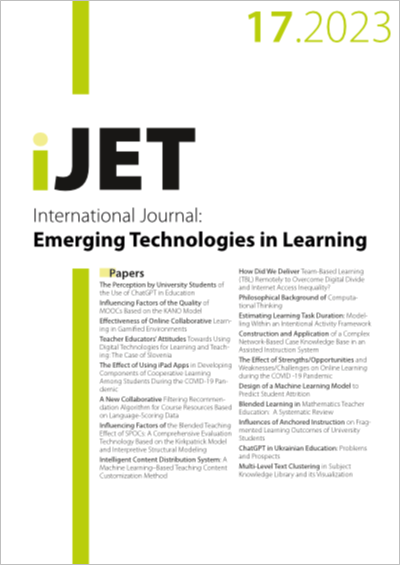Blended Learning in Mathematics Teacher Education: A Systematic Review
DOI:
https://doi.org/10.3991/ijet.v18i17.36985Keywords:
Blended learning, mathematics teacher education, systematic reviewAbstract
Blended learning is an active teaching approach widely applied in recent decades, especially in higher education. This study systematically reviews blended learning’s applications in mathematics teacher education based on Preferred Reporting Items for Systematic Reviews and Meta-Analyses (PRISMA) guidelines. This study aims to understand the potential of blended learning for various mathematical topics, the common blended learning models, and the benefits and challenges this teaching approach presents for educational stakeholders. Accordingly, 25 studies from the Scopus database are analyzed. The study shows that many studies were conducted between 2019 and 2022, focusing on a few developing countries. In addition, blended learning is extensively used in teaching most mathematics subtopics, especially in courses on teaching methods, with the widespread use of three models: the flipped model, the mixed model, and the online practicing model. Based on this study’s assessment, blended learning has a positive impact on the development of knowledge, skills, and attitudes among preservice teachers. However, it also presents lecturers and prospective teachers with various challenges related to technological infrastructure, teaching materials, digital and professional competence, and students’ knowledge and engagement. The study’s results provide an overview of the application of blended learning in mathematics teacher education and support certain future recommendations for new research directions.
Downloads
Published
How to Cite
Issue
Section
License
Copyright (c) 2023 Duong Huu Tong, Uyen Bui Phuong

This work is licensed under a Creative Commons Attribution 4.0 International License.



